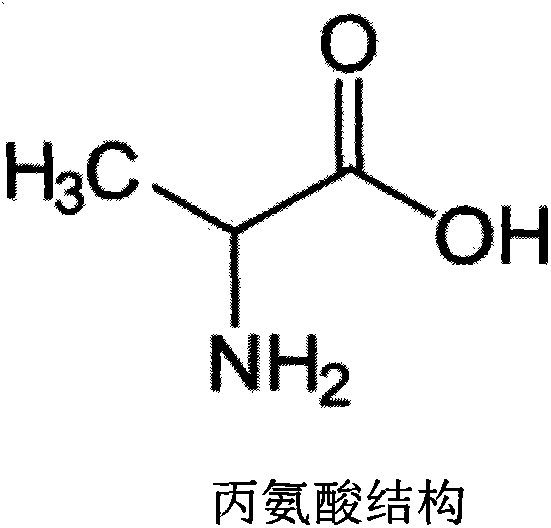Method for producing alanine from recombinant Escherichia coli by the aid of glycerin
A technology of Escherichia coli and alanine, applied in the field of microbial genetic engineering, can solve the problems of long production cycle, increased food cost, large equipment investment, etc., and achieve the effect of reduced production cost and stable output
- Summary
- Abstract
- Description
- Claims
- Application Information
AI Technical Summary
Problems solved by technology
Method used
Image
Examples
Embodiment 1
[0057] 1) Cloning of gene fragments
[0058] Using primer sequence 1 and primer sequence 2, the gene fragment alaD was amplified, and the PCR amplification conditions were: 95°C for 30S, 62°C for 20S, 72°C for 30S, 30 cycles, and 72°C for 10 min.
[0059] 2) Construction of plasmid
[0060] The amplified gene fragment was digested with different restriction enzymes KpnI and XbaI to obtain cohesive ends, and the pUC19 vector was also digested with restriction enzymes KpnI and XbaI. The digestion conditions were all at 37°C and incubated for 2 hours. Recover all the obtained gene fragments and linearized vectors, mix the purified gene fragments and linearized vectors at equal concentrations, add ligation buffer and DNA ligase, and connect overnight at 37°C; obtain plasmid pALA ligation solution ;
[0061] 3) Screening of positive clones
[0062] The obtained plasmid pALA connection solution was transformed into E. coli cells by heat shock method. The specific method was as f...
PUM
 Login to View More
Login to View More Abstract
Description
Claims
Application Information
 Login to View More
Login to View More - R&D
- Intellectual Property
- Life Sciences
- Materials
- Tech Scout
- Unparalleled Data Quality
- Higher Quality Content
- 60% Fewer Hallucinations
Browse by: Latest US Patents, China's latest patents, Technical Efficacy Thesaurus, Application Domain, Technology Topic, Popular Technical Reports.
© 2025 PatSnap. All rights reserved.Legal|Privacy policy|Modern Slavery Act Transparency Statement|Sitemap|About US| Contact US: help@patsnap.com

